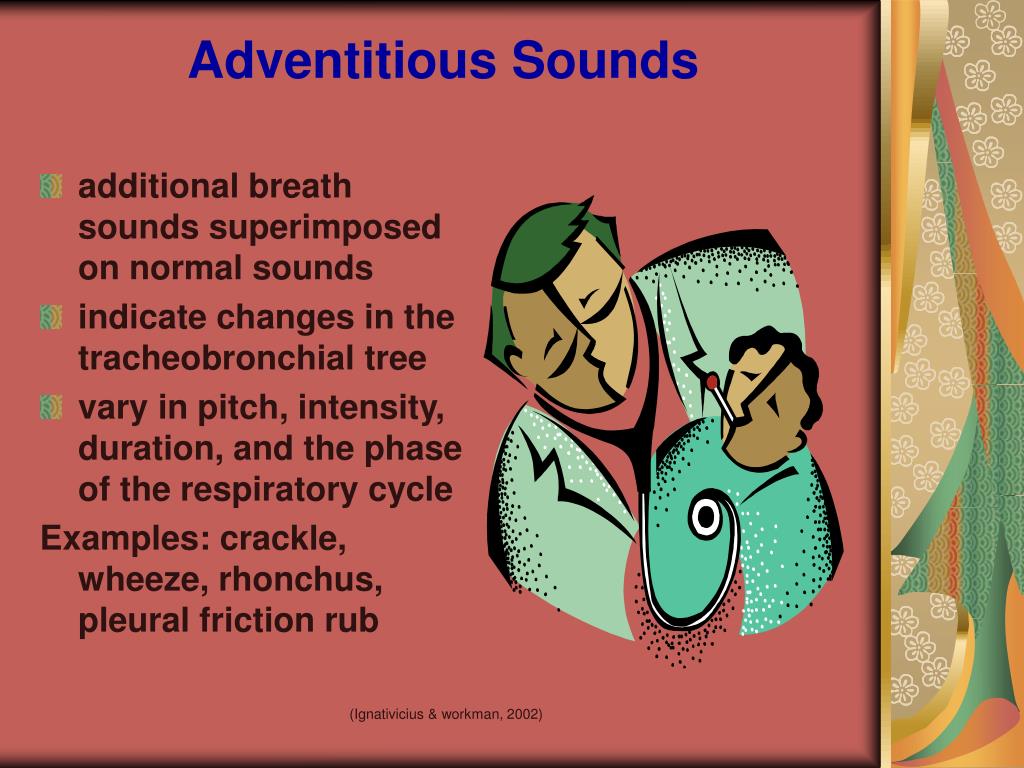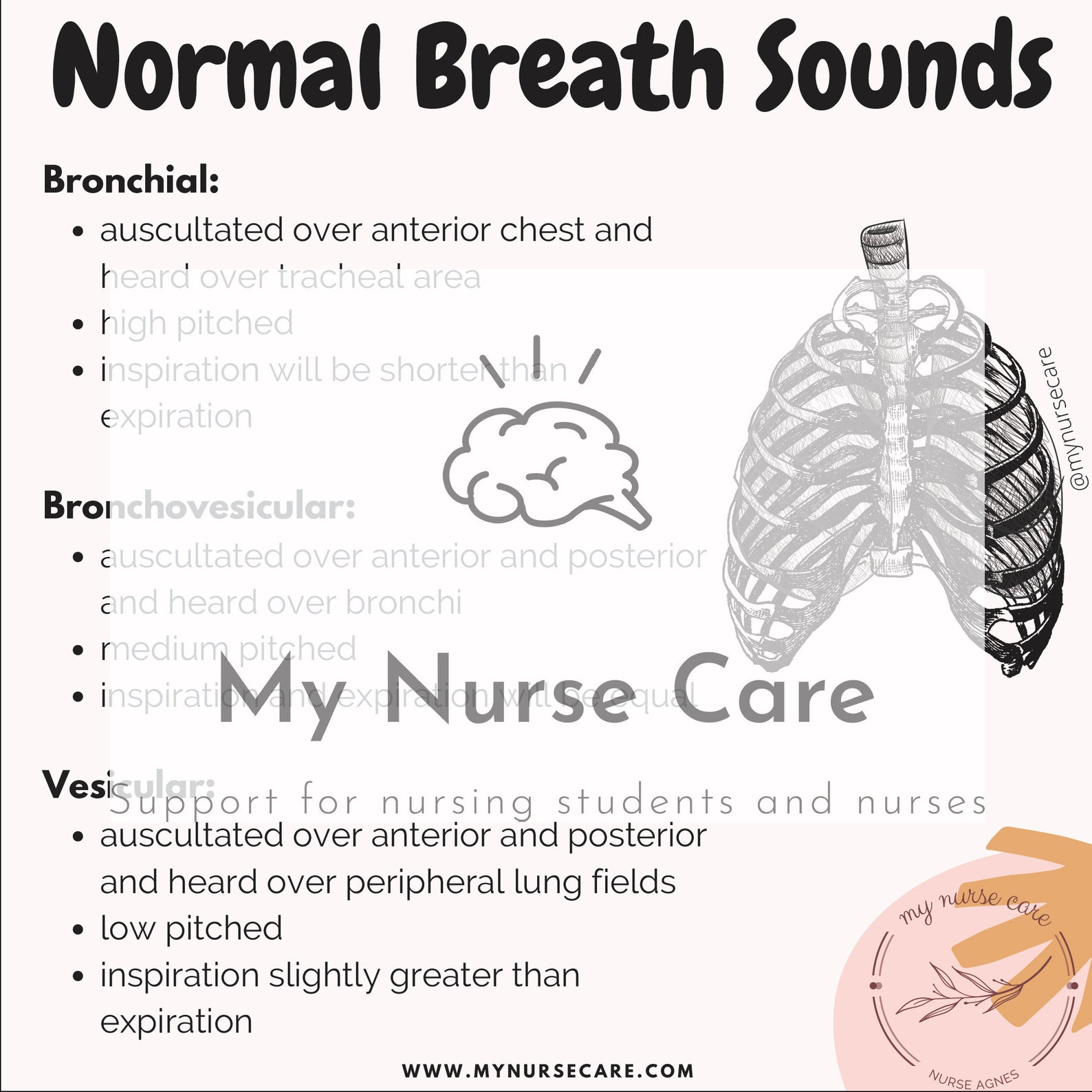
- #DEFINE THREE TYPES OF ADVENTITIOUS BREATH SOUNDS HOW TO#
- #DEFINE THREE TYPES OF ADVENTITIOUS BREATH SOUNDS PROFESSIONAL#
Have you had any feelings of breathlessness Please identify what you are taking and the purpose of each. Please describe the conditions and treatments.Īre you currently taking any medications, herbs, or supplements for respiratory concerns? Wolters Kluwer Health: Philadelphia.Have you ever been diagnosed with a respiratory condition, such as asthma, COPD, pneumonia, or allergies?ĭo you use home respiratory equipment like CPAP, BiPAP, or nebulizer devices? Bate’s Guide to Physical Examination and History Taking (13 th ed.). Such conditions include atelectasis, severe COPD, severe asthma, pneumothorax, tension pneumothorax, and extrinsic bronchial compression from tumor.īickley, L. Diminished breath sounds can be caused by anything that prevents air from entering the lungs.Expiratory stridor or mixed inspiratory/expiratory stridor suggests obstruction below the vocal cords (i.e., croup, bacterial tracheitis, tumor, foreign body).


A wheeze is the result of narrowed airways.
#DEFINE THREE TYPES OF ADVENTITIOUS BREATH SOUNDS HOW TO#
Become familiar with the sounds and how to correctly document them. Here’s a list of common adventitious breath sounds with explanations and causes.
#DEFINE THREE TYPES OF ADVENTITIOUS BREATH SOUNDS PROFESSIONAL#
Establishing Yourself as a Professional and Developing Leadership Skills.Ensuring Patient & Family Centered Care.

Developing Critical Thinking Skills and Fostering Clinical Judgement.Alteplase Injection for Acute Ischemic Events.Affirming Care for Patients who are LGBTQ+.Lippincott Clinical Conferences On Demand.Continuing Education Bundle for Nurse Educators.Lippincott NursingCenter’s Critical Care Insider.Lippincott NursingCenter’s Career Advisor.

Academic/Practice Innovation: An Interview with Dr.Becoming Great in Healthcare: Webinar Highlights.People Connections and Building Relationships: An Interview with Cathleen Wheatley.Leveraging Vulnerability to Promote Change.6 Characteristics of a High-Trust Culture.Communication as a Concept in Nursing Education.


 0 kommentar(er)
0 kommentar(er)
